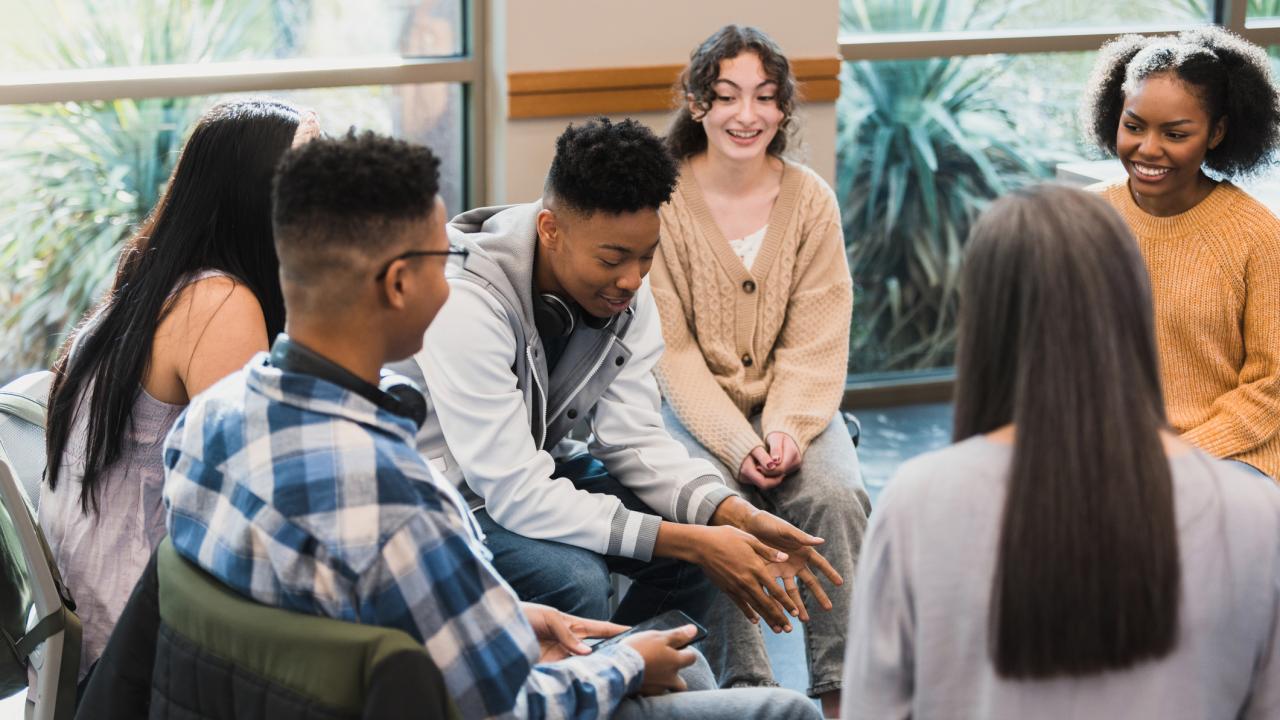Teens Need Consistent Positive Messaging in Multicultural Environments
Teens Need Consistent Positive Messaging in Multicultural ... University of California, Davis


Influence of Multicultural Messaging on Academic Engagement in Adolescents

In an increasingly diverse and multicultural world, adolescents struggle academically in multicultural environments if they don’t receive consistent and positive messages at school, home, and among their peers about cultures that are not their own, a recent study suggests.
Introduction
A survey conducted by the University of California, Davis, involved more than 700 teenagers attending public schools in the Southwestern United States. The study aimed to examine the impact of multicultural messaging on academic engagement and goals for higher education among adolescents in ethnically diverse schools.
Findings
The study revealed that although these students attended schools with diverse ethnicities and reported learning about multiple cultures in school, they did not always receive consistent messages from their friends and families. This lack of consistency affected their academic engagement, including their participation and interest in school, as well as their goals for higher education.
Lead author of the study, Maciel M. Hernández, emphasized the emotional toll it can take on adolescents to receive conflicting messages, which ultimately impacts their academic achievement. Hernández, an assistant professor of human ecology, stated, “Youth need to successfully interact with and be socially connected to people from diverse backgrounds. It’s important for them to be full partakers in this fabric of society and appreciate cultural traditions that are not their own.”
Surveyed about getting consistent messages
The researchers surveyed sixth and ninth graders from multiple schools in the same region. The survey results showed that only 4% of the participants reported receiving consistent and high levels of multicultural messaging and affirmation in their classroom, peer, and family environments.
The survey included questions about what the teens had learned about diverse cultures, as well as how much their friends and family encouraged their learning and appreciation of other cultures. For example, regarding family interaction, the survey asked how often parents and caregivers encouraged their teens to read books about other racial/ethnic groups, discussed important people or events in the history of racial/ethnic groups other than their own, and expressed the belief that all people are equal regardless of race/ethnicity.
Similar questions were posed about peer interaction, but the researchers did not inquire about the specific settings where students interacted with their peers, such as extracurricular activities or participation in sports, clubs, or worship.
The survey also assessed how much the students enjoyed school, learning, and activities, as well as their aspirations for educational progression.
Impact on Academic Functioning
Hernández highlighted that students who reported positive experiences in school and expressed enjoyment for learning were more likely to have goals for higher education. She emphasized the importance of fostering a positive school environment that engages students meaningfully in a culturally diverse world, as it has far-reaching effects on various aspects of their lives and future success.
Influence of Immigrant Background
The survey findings indicated that youth with at least one immigrant parent were more likely to experience higher degrees of multicultural socialization compared to those without immigrant parents. This may be attributed to the intentional efforts made by immigrant parents to integrate into diverse communities and pass on these aspirations to their children.
Demographics
The majority of respondents in the study were Latinx (31.8%) and multiethnic (31.5%). Whites accounted for 25.7% of the participants, while 7.3% were Black, 1.4% were Asian American or Pacific Islander, 1.4% were American Indian or Alaska Native, and 1% were Middle Eastern or North African.
Promoting Multicultural Socialization
The study concluded that promoting multicultural socialization across school, peer, and family settings shows promise in improving adolescents’ academic functioning. Given that only 4% of students reported receiving consistent messages, there is significant room for improvement. Hernández stated, “It is crucial to enhance the support for multicultural messaging in order to foster a more inclusive educational environment.”
Conclusion
The findings of this study underscore the importance of consistent and positive multicultural messaging in academic settings. To achieve the Sustainable Development Goals (SDGs), particularly Goal 4: Quality Education, it is essential to create an inclusive learning environment that values and appreciates diverse cultures. By promoting multicultural socialization, schools can enhance students’ academic engagement and contribute to their future success.
Additional Information
Co-authors of the study include Olga Kornienko from the Department of Psychology at George Mason University, Adam A. Rogers from the School of Family Life at Brigham Young University, and Thao Ha from the Department of Psychology at Arizona State University. The research was made possible by a grant from the Spencer Foundation.
SDGs, Targets, and Indicators
-
SDG 4: Quality Education
- Target 4.7: By 2030, ensure that all learners acquire the knowledge and skills needed to promote sustainable development, including among others through education for sustainable development and sustainable lifestyles.
- Indicator: Percentage of students who receive consistent and high levels of multicultural messaging and affirmation in their classroom, peer, and family environments.
-
SDG 10: Reduced Inequalities
- Target 10.2: By 2030, empower and promote the social, economic, and political inclusion of all, irrespective of age, sex, disability, race, ethnicity, origin, religion or economic or other status.
- Indicator: Percentage of youth with at least one immigrant parent who experience higher degrees of multicultural socialization compared to those without immigrant parents.
Explanation:
The article highlights the importance of consistent and positive messages about cultures that are not one’s own in academic settings. This aligns with SDG 4: Quality Education, which aims to ensure that all learners acquire the knowledge and skills needed to promote sustainable development. Specifically, Target 4.7 emphasizes the importance of education for sustainable development and sustainable lifestyles. The article suggests that students who receive consistent multicultural messaging and affirmation in their classroom, peer, and family environments are more likely to be academically engaged and have goals for higher education. Therefore, the indicator for this target can be the percentage of students who receive consistent and high levels of multicultural messaging and affirmation.
The article also discusses the role of multicultural socialization in reducing inequalities. SDG 10: Reduced Inequalities aims to promote the social, economic, and political inclusion of all individuals, regardless of their background. Target 10.2 specifically focuses on empowering and promoting the inclusion of individuals irrespective of their race, ethnicity, or origin. The article suggests that youth with at least one immigrant parent are more likely to experience higher degrees of multicultural socialization, indicating a potential pathway for reducing inequalities. Therefore, the indicator for this target can be the percentage of youth with at least one immigrant parent who experience higher degrees of multicultural socialization compared to those without immigrant parents.
| SDGs | Targets | Indicators |
|---|---|---|
| SDG 4: Quality Education | Target 4.7: By 2030, ensure that all learners acquire the knowledge and skills needed to promote sustainable development, including among others through education for sustainable development and sustainable lifestyles. | Percentage of students who receive consistent and high levels of multicultural messaging and affirmation in their classroom, peer, and family environments. |
| SDG 10: Reduced Inequalities | Target 10.2: By 2030, empower and promote the social, economic, and political inclusion of all, irrespective of age, sex, disability, race, ethnicity, origin, religion or economic or other status. | Percentage of youth with at least one immigrant parent who experience higher degrees of multicultural socialization compared to those without immigrant parents. |
Behold! This splendid article springs forth from the wellspring of knowledge, shaped by a wondrous proprietary AI technology that delved into a vast ocean of data, illuminating the path towards the Sustainable Development Goals. Remember that all rights are reserved by SDG Investors LLC, empowering us to champion progress together.
Source: ucdavis.edu

Join us, as fellow seekers of change, on a transformative journey at https://sdgtalks.ai/welcome, where you can become a member and actively contribute to shaping a brighter future.







